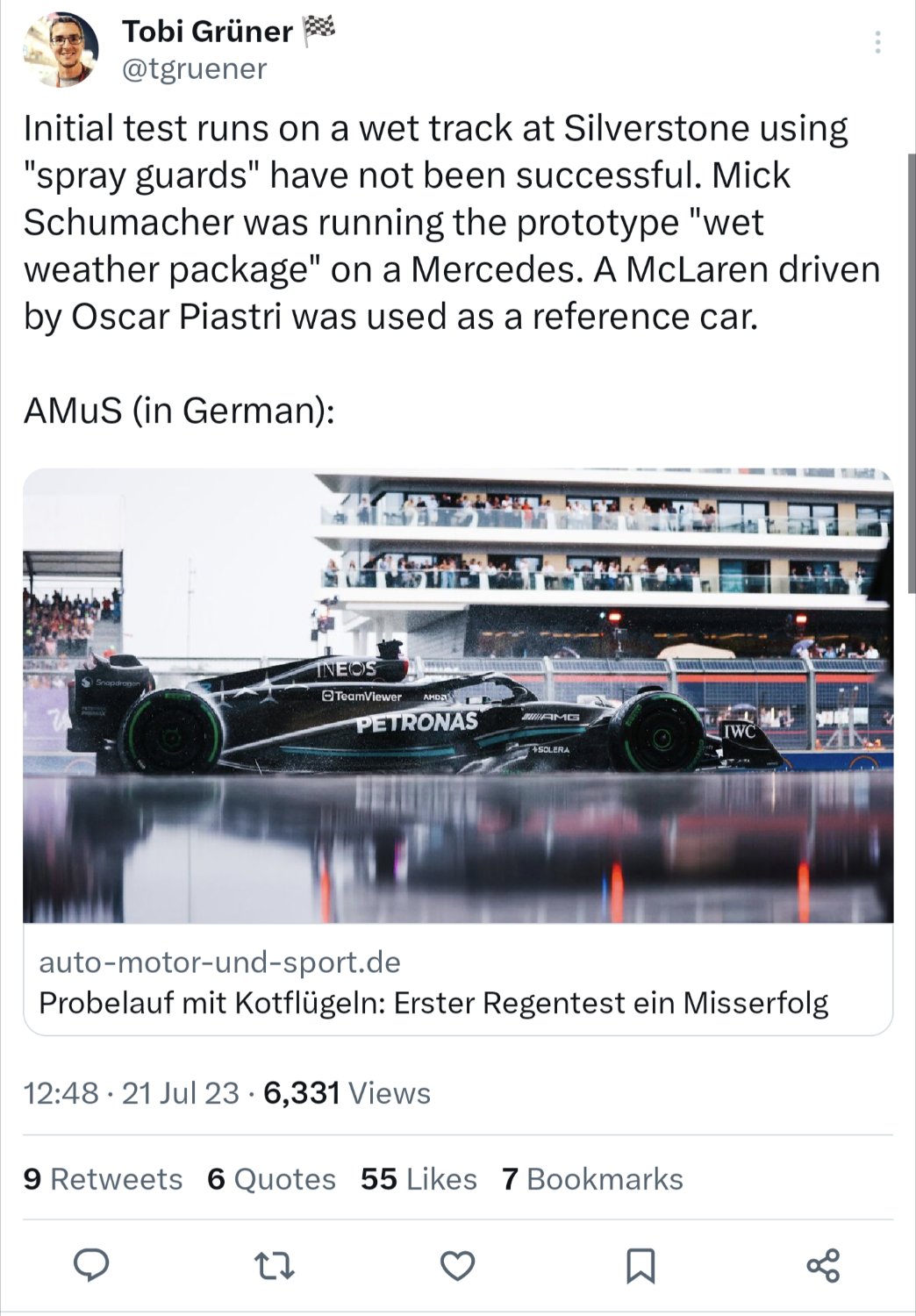Translated article below:
Formula 1 has a rain problem. At high speeds, the cars whirl up too much water, which means that the pursuers drive in the field like in a smoke screen. Forward visibility is severely impaired. The risk of accidents increases.
The introduction of wider tires in the 2017 season had increased the spray. The problem has obviously increased since last season due to the ground effect racing cars. Because the cars radiate the water upwards.
Those responsible for the premier class are feverishly looking for a solution to reduce the spray in order to improve visibility again and to make rain racing possible again without danger. Fenders over the rear wheels could come to the rescue here. They should prevent the water displaced by the 405 millimeter wide rear tires from splashing upwards and backwards.
Formula 1 carried out a first test in the week after the British GP. At Silverstone, Mercedes and McLaren committed to take part. Reserve driver Mick Schumacher piloted the Silver Arrow with fenders over the rear wheels. Mercedes had built the first prototypes of the so-called "Spray Guards" after the FIA had run simulations, and then asked the ten teams for suggestions for improvement.
Oscar Piastri steered the McLaren around the wet racetrack. The MCL60 was without fenders to provide a comparison. The result: The rain test with the covers was a failure. There was still too much spray. And according to observers, the aesthetics of the fenders left a lot to be desired. The world association FIA has not yet published pictures of the test.
The regulators are in a bind. They experimented at Silverstone with fenders that didn't completely cover the rear tires. These could not really contain the water and, on top of that, distributed it in different directions.
None of the modifications brought satisfactory results. "We are not yet where we want to be," says FIA circles. On the other hand, it was just the first trial run. With the experience gained, better solutions could emerge in the future.
Of course, covers that are as wide as the tires themselves would also be possible. But that creates additional problems with aerodynamics, because the load automatically increases the larger the area is. Aerodynamics in Formula 1 is a game of every millimeter.
The engineers want to avoid any disruptive factor that could negatively affect the airflow. There are quite a few in the paddock who are therefore pessimistic about the future of wet racing – especially on high-speed tracks.
Should further rain tests still bring a breakthrough, the fenders would be included as a standard part in the regulations. Each team would have to build them themselves according to uniform specifications. The race management would decide under which conditions they would be used. An example: In the event of heavy rain with poor visibility, everyone would be obliged to deploy the "Spray Guards". Even if things improved, they stayed with the car until the end of the race.
The FIA said in a statement: "The first phase of field testing for the wet weather package was completed with a version of the mudguard fitted to a Mercedes. A McLaren was used as a reference vehicle to evaluate the concept and provide information for future development of the project to obtain." It continues: "This on-track test provided valuable CFD correlation data as well as good driver feedback. Both will be used to refine both the methodology and the design for phase 2 of this project."
